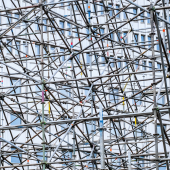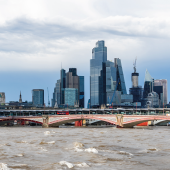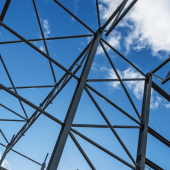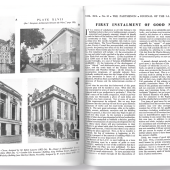Why did the Baltimore bridge collapse so quickly?
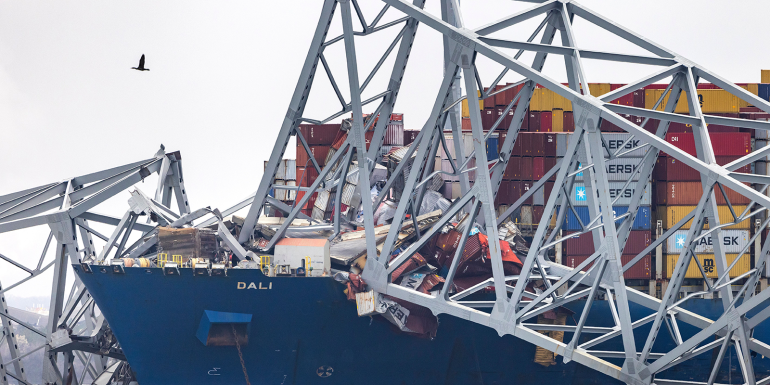
A huge shipping vessel that collided with a major bridge in Baltimore, USA, has left numerous people missing and prompted numerous questions, many of them are structural: why was the bridge not protected against such collisions, and why did it collapse so quickly? We look at what experts around the world are saying.
In the early hours of Tuesday morning, a 948ft cargo ship on its way to Sri Lanka crashed into the 1.6 mile-long Francis Scott Key Bridge in Baltimore, Maryland.
Six people remain unaccounted for after the bridge collapsed, authorities say – all believed to be construction workers who had been repairing potholes on the bridge. Two people have been rescued so far, with one of them in serious condition.
The Dali ship, which has a capacity of 10,000 containers and was a third full at the time of the incident, lost power and slammed into one of the bridge's supports. The 1.6-mile-long structure fell almost instantaneously into the Patapsco River, along with vehicles and workers who were on it at the time.
Bridge design
The dramatic destruction of the bridge, which is named after the author of the American national anthem and opened in 1977, is described as a continuous truss bridge, and its main span of 1,200ft was the third longest of any bridge of its type in the world. The main structure over the navigation channel is made up of three sections or spans. The bridge rests on four supports, two of which sit each side of the navigable waterway. It is these two piers that are critical to protect against ship impacts.
The structure was designed with two layers of protection: “dolphins” made from concrete, and a fender. The dolphins are intended to be sacrificed in the event of a wayward ship, absorbing its energy and being deformed in the process, but keeping the ship from hitting the bridge itself.
The fender is the last layer of protection. It is a structure made of timber and reinforced concrete placed around the main piers. Again, it is intended to absorb the energy of any impact.
Writing for The Conversation, Colin Caprani, Associate Professor, Civil Engineering at Monash University, described the incident as "a 20th century bridge meets a 21st century ship".
"Fenders are not intended to absorb impacts from very large vessels," Colin explained. "And so when the MV Dali, weighing more than 100,000 tonnes, made it past the protective dolphins, it was simply far too massive for the fender to withstand."
Lessons from disaster
So what are the lessons apparent at this early stage?
"First, it’s clear the protection measures in place for this bridge were not enough to handle this ship's impact. Today’s cargo ships are much bigger than those of the 1970s, and it seems likely the Francis Scott Key Bridge was not designed with a collision like this in mind," writes Colin.
"So one lesson is that we need to consider how the vessels near our bridges are changing. This means we cannot just accept the structure as it was built, but ensure the protection measures around our bridges are evolving alongside the ships around them.
He says the second, and more general lesson, is a reminder that we must remain vigilant in managing our bridges. "This tragic event only emphasises the need to spend more on maintaining our ageing infrastructure. This is the only way to ensure it remains safe and functional for the demands we put on it today."



